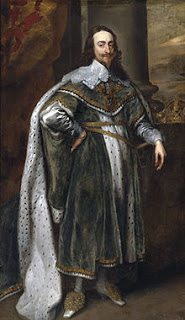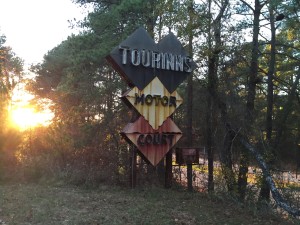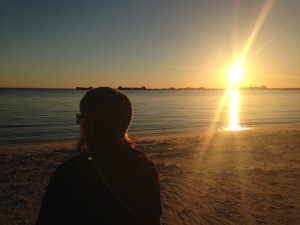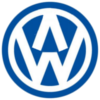Hey Kiddos, today’s destination is Kiptopeke State Park on the Eastern Shore of Virginia. The Eastern Shore is called that because is separated from the rest of Virginia by the Chesapeake Bay and borders the Atlantic Ocean on its’ eastern side. The Eastern Shore, long the home of a number of Native American tribes, was explored by Captain John Smith, of Pocahontas fame – or infamy and founder of the Virginia Colony, in 1608.
Established in 1634 as one of the 8 original shires of Virginia by the House of Burgesses (under King Charles I), the Eastern Shore, or Accomac Shire as it was known, is one of the oldest inhabited areas of Virginia. (see the wikipedia entry)

Accomac Shire was named after the Accawmack Indians who lived in the area. We also get the name Kiptopeke from the Accawmack language. Kiptopeke means Big Water and refers to the nearby bay.
Kiptopeke now sits very close to the end of the Chesapeake Bay Bridge and Tunnel. The 17.6 mile span was finished in 1964 and is one of the longest bridge and tunnel systems in the world. But if you think that is long, imagine this: if you took all of the supports that hold the bridge up and over the water and laid them out end-to-end they would stretch almost 100 miles! (source: wikipedia)
How did people get across the bay before the bridge? Well, dear children, let me tell you. Before the bridge and tunnel there was a ferry. Ferries are boats that haul people and vehicles across the water. The ferry service on the southern Eastern Shore ran from Kiptopeke to Norfolk, Virginia from 1950 to 1964. This ferry launched from the pier at Kiptopeke… but there was a problem.
 When they were planning the construction of the pier they had to do something about the waves and tidal currents from the nearby open ocean. Without putting some sort of breakwater in place the pier would not last. A breakwater absorbs the energy of waves and helps form a more calm area of water between it and the shore, or the pier in this case. But what to use for a breakwater? Many other places had used piles of rocks or man-made jetties as a breakwater, but Kiptopeke used something different: concrete ships.
When they were planning the construction of the pier they had to do something about the waves and tidal currents from the nearby open ocean. Without putting some sort of breakwater in place the pier would not last. A breakwater absorbs the energy of waves and helps form a more calm area of water between it and the shore, or the pier in this case. But what to use for a breakwater? Many other places had used piles of rocks or man-made jetties as a breakwater, but Kiptopeke used something different: concrete ships.
Concrete ships? That’s right. These ships, called McCloskey ships, were made out of concrete during the second world war. During the war steel was in short supply, and needed elsewhere, so shipbuilders used a special type of concrete to make transport ships. But how did they float? Well, boats of all sorts of materials float because they weigh less than the water they are displacing. That’s a fancy way of saying if you took all the water that would fit in a boat sized shape and weighed it, it would weigh more than the boat. So that’s why boats of concrete, or steel, float – if you think about it boats are mostly air with a thin layer of steel separating it from the water.
9 McCloskey ships were sunk off the coast of Kiptopeke to act as a breakwater for the pier and ferry. These ships are still there today an provide a pleasant lagoon for swimming, canoeing, or kayaking at Kiptopeke. Fish and birds also make their homes in and around these ships.
This area was purchased by the state of Virginia in 1992 and turned into a state park. Keep an eye out for interesting shells and bones along the shore and make sure to count each of the ships in the bay.
The names of the ships are:
- S.S. Arthur Newell Talbot
- S.S. Edward Thatcher
- S.S. John Grant
- S.S. Leonard Chase Wason
- S.S. Richard Kidder Meade
- S.S. Robert Whitman Lesley
- S.S. Willard A. Pollard
- S.S. William Foster Cowham
- S.S. Willis A. Slater
You can also watch a video of all Kid Tripping posts:
